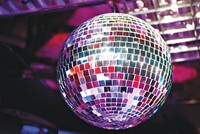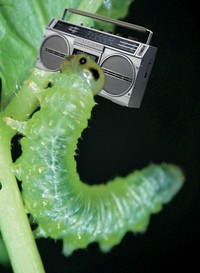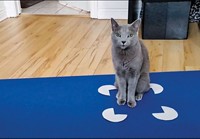Advertisement
Grab your lab coat. Let's get started
Welcome!
Welcome!
Create an account below to get 6 C&EN articles per month, receive newsletters and more - all free.
It seems this is your first time logging in online. Please enter the following information to continue.
As an ACS member you automatically get access to this site. All we need is few more details to create your reading experience.
Not you? Sign in with a different account.
Not you? Sign in with a different account.
ERROR 1
ERROR 1
ERROR 2
ERROR 2
ERROR 2
ERROR 2
ERROR 2
Password and Confirm password must match.
If you have an ACS member number, please enter it here so we can link this account to your membership. (optional)
ERROR 2
ACS values your privacy. By submitting your information, you are gaining access to C&EN and subscribing to our weekly newsletter. We use the information you provide to make your reading experience better, and we will never sell your data to third party members.
Biological Chemistry
Newscripts
Olfactory science meets contemporary art, plus ants
by Sarah Everts
May 15, 2017
| A version of this story appeared in
Volume 95, Issue 20
Body odor, bacteria, and insect mind melds

For anyone who has ever wanted to share a psychic experience with ants, the opportunity for arthropod communion now awaits you at New York City’s Guggenheim Museum until July 5. There, Anicka Yi’s exhibition “Life Is Cheap” features ants, ant aroma, human body odor, armpit bacteria, agar, and other equally delightful, quirky media.
First, you should know that this is art you experience with your nose. When visitors enter the exhibition, canisters spritz scents derived from body odor originating from Asian American women and carpenter ants in a work titled “Immigrant Caucus.” To create the fragrance, Yi sampled the women’s sweat and worked with forensic chemist Kenneth Furton to identify the chemical constituents of the human body odors. Furton, a professor at Florida International University, is a pro at scent detection, although he’s arguably better known for his cadaver odor expertise than for his contemporary art collaborations.
With a list of the women’s sweaty top notes in hand, Yi then worked with a Parisian perfumer to recreate a synthetic interpretation of the armpit aroma and spiked the concoction with smelly chemicals emitted by carpenter ants. Museum visitors move on to experience the rest of the exhibit with the scent of the hybrid aroma top of mind.
Those familiar with Yi’s previous work know that this is par for the course for the artist. She often integrates olfaction, bacteria, technology, and the unexpectedly absurd in to her art. “Sometimes the wall text that hangs beside her work reads more like an alien shopping list than an informational label,” noted the New York Times in February. “Her materials include everything from aquarium gravel to Girl Scout cookies, and for various installations she has fermented kombucha into leather, tempura-fried flowers and injected live snails with oxytocin.” In 2016, her installation “Search Image” featured a taxidermy coyote and hardware.
The current exhibit, which honors Yi’s receipt of the revered Hugo Boss Prize, also features a self-contained biosphere composed of bacteria. The microorganisms are sampled from Manhattan’s Chinatown and Koreatown neighborhoods and are growing in agar, “as if an invasive life force has overrun the environment,” notes a press release.
Another piece, called “Lifestyle Wars,” features ants navigating “a network of pathways that are reflected infinitely across mirrored surfaces, evoking a massive data-processing unit in which their industrious movement embodies the flow of information,” according to the press release.
So what about that psychic mind meld? Yi is drawn to ants partly because much of the insect’s behavior is guided by olfactory cues. “The colony is exposed to the same hybrid scent that fills the entry corridor,” the press release notes, “creating the possibility of a shared psychic experience between ant and human.”
Please send comments and suggestions to newscripts@acs.org.





Join the conversation
Contact the reporter
Submit a Letter to the Editor for publication
Engage with us on Twitter